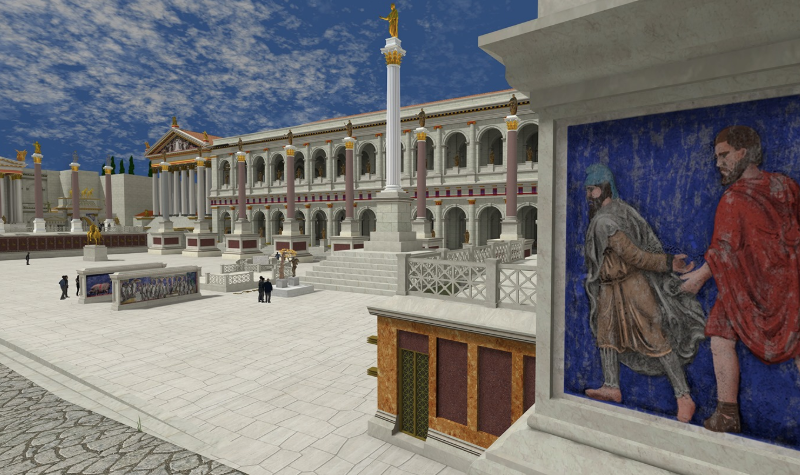100 voices of AR/VR in education — from virtualiteach.com
Ambitious VR experience restores 7,000 Roman buildings, monuments to their former glory — from smithsonianmag.com by Meilan Solly
You can take an aerial tour of the city circa 320 A.D. or stop by specific sites for in-depth exploration
Excerpt:
Ever wish you could step into a hot air balloon, travel back in time to 320 A.D., and soar over the streets of Ancient Rome? Well, that oddly specific fantasy is achievable in a new virtual reality experience called “Rome Reborn.”
The ambitious undertaking, painstakingly built by a team of 50 academics and computer experts over a 22-year period, recreates 7,000 buildings and monuments scattered across a 5.5 square mile stretch of the famed Italian city. The project, according to Tom Kington of the Times, is being marketed as the largest digital reconstruction of Rome to date.
VR Isn’t a Novelty: Here’s How to Integrate it Into the Curriculum — from edsurge.com by Jan Sikorsky
Excerpt:
While the application of VR to core academics remains nascent, early returns are promising: research now suggests students retain more information and can better synthesize and apply what they have learned after participating in virtual reality exercises.
And the technology is moving within the reach of classroom teachers. While once considered high-end and cost-prohibitive, virtual reality is becoming more affordable. Discovery VR and Google Expeditions offer several virtual reality experiences for free. Simple VR viewers now come in relatively low-cost DIY cardboard view boxes, like Google Cardboard, that fit a range of VR-capable smartphones.
…
Still, teachers may remain unsure of how they might implement such cutting-edge technology in their classrooms. Their concerns are well founded. Virtual reality takes careful planning and implementation for success. It’s not simply plug-and-play technology. It also takes a lot of work to develop.
From DSC:
Reduced costs & greater development efficiencies needed here:
“In our case, to create just 10 minutes of simulation, a team of six developers logged almost 1,000 hours of development time.”
Unveiling RLab: the First-City Funded VR/AR Center in the Country Opens Doors at Brooklyn Navy Yard — from prnewswire.com
New York City’s Virtual and Augmented Reality Center Will Fuel Innovation, Entrepreneurship, and Education, While Creating Hundreds of Well-Paying Jobs
Excerpt:
BROOKLYN, N.Y., Oct. 24, 2018 /PRNewswire/ — New York City Economic Development Corporation (NYCEDC), the Mayor’s Office of Media and Entertainment (MOME), the NYU Tandon School of Engineering and the Brooklyn Navy Yard today announced the launch of RLab – the first City-funded virtual and augmented reality (VR/AR) lab in the country. Administered by NYU Tandon with a participating consortium of New York City universities, including Columbia University, CUNY and The New School, RLab will operate out of Building 22 in the Brooklyn Navy Yard and will cement New York City’s status as a global leader in VR/AR, creating over 750 jobs in the industry.
New virtual reality lab at UNMC — from wowt.com
This VR-live actor mashup is like your best absinthe-fueled nightmare — from cnet.com by Joan Solsman
Chained, an immersive reimagining of Dickens’ A Christmas Carol, weds virtual reality with a motion-capture live actor. Could it be the gateway that makes VR a hit?
Also see:
…and this as well:
See the results of a months-long effort to create a HoloLens experience that pays homage to Mont-Saint-Michel, in Normandy, France, in all its forms – as a physical relief map and work of art; as a real place visited by millions of people over the centuries; and as a remarkable digital story of resilience. In this three-part Today in Technology series, they examine how AI and mixed reality can open a new window into French culture by using technology like HoloLens.










